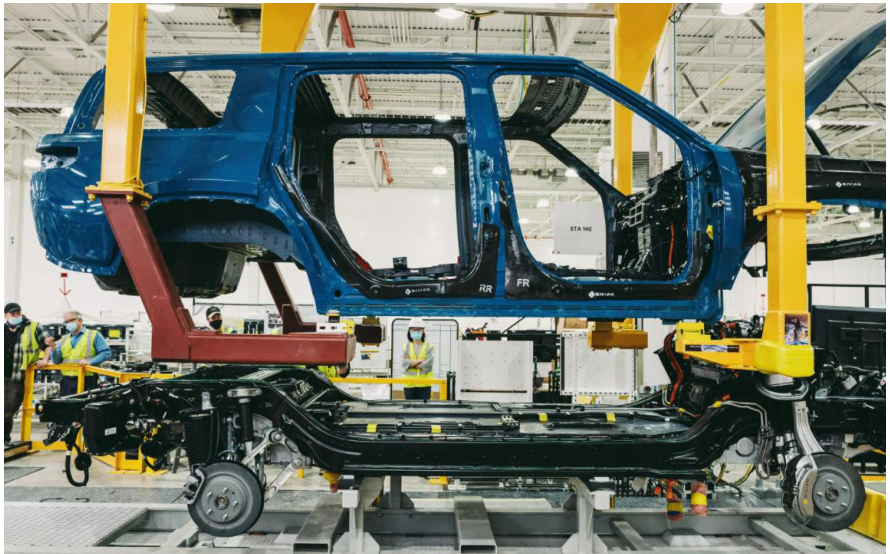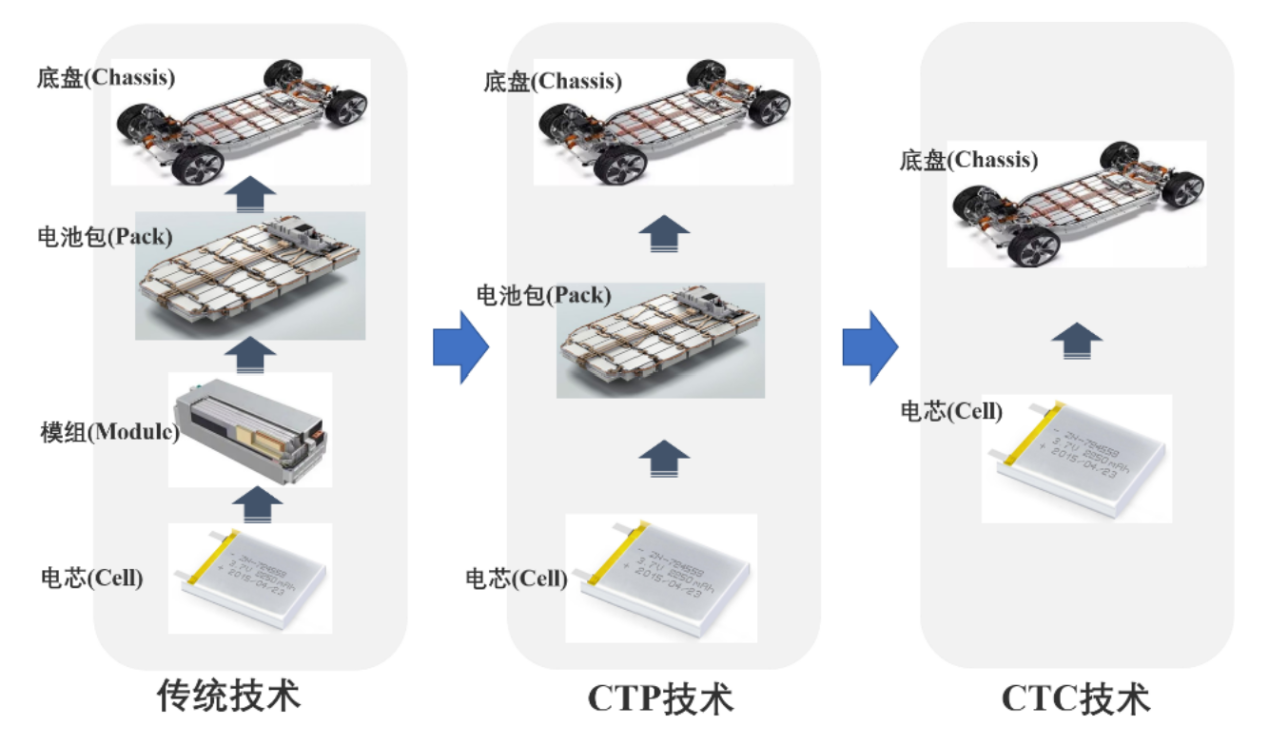Author: Ella
Beyond the battery business, CATL’s strategic business – skateboard chassis – is gradually emerging.
On October 31, CATL and VinFast, a Vietnamese car manufacturer, signed a global strategic cooperation memorandum of understanding to explore various forms of cooperation in CIIC (CATL’s Integrated Intelligent Chassis) to help VinFast quickly open up the global market. It is reported that VinFast is the first Vietnamese company to produce electric cars and electric skateboards, and is committed to entering the global market.
On November 21, MATRON technology co., ltd., a joint venture invested by CATL’s holding subsidiary, Newity Power, and Xingjiao Group and LEO Group, was established in Shanghai. The company aims to become a “new travel solution” for RV suppliers, with new energy extended-range RV chassis technology as its initial cooperative project, focusing on the electrification of high-end RVs.
Both moves indicate CATL’s confidence in the skateboard chassis project, as well as CATL’s ambition to go beyond being just a supplier of automotive parts and further delve into the manufacturing process of new energy vehicles, becoming a core player in the industry. Meanwhile, with the addition of CATL, a new energy giant, the development of skateboard chassis will also be greatly promoted.
Unpacking Skateboard Chassis
The concept of skateboard chassis was first proposed by General Motors in 2002 and was installed on its hydrogen-powered concept car, the Hy-Wire.
Hy-Wire Hydrogen-Powered Skateboard Chassis by General Motors

The car placed the hydrogen power system in a flat chassis, using wire-controlled steering technology to replace the mechanical connection between the steering wheel and the front wheels. The Hy-Wire placed the fuel cell, electric motor, compressed hydrogen tank, and all electronic equipment in the chassis, and the body was only a simple replaceable shell. By concentrating all the complex devices on a skateboard-like chassis, the entire chassis was decoupled from the cabin to achieve independent design of the two.
Chassis developed in this way are called skateboard chassis because their appearance is like a skateboard. However, limited by the fact that traditional gasoline was still the mainstream power system at the time, and body and chassis integration was still the mainstream development model, this skateboard chassis did not receive large-scale application in the market.# The Success of Rivian Puts the Skateboard Chassis Concept into the Mainstream
It is now 2021, and the successful listing of Rivian, a skateboard chassis company, has brought the concept of skateboard chassis to public attention, with the whole industry chain focusing on the technology.

The skateboard chassis is a development design that separates the body from the chassis, which can greatly shorten the development cycle and reduce the difficulty of research and development for car manufacturers, as the focus is on designing and developing the chassis alone. One chassis can adapt to different bodies as long as the interface is defined, achieving the goal of “one chassis for multiple uses.”
Following this concept, in the future, only one skateboard chassis and necessary operational functions will be needed for independent driving, while body and interior can be replaced at will, providing a super DIY experience. This will completely subvert and reshape the traditional automobile supply chain relationship and vehicle production method, greatly shortening the development cycle, making the development of the whole vehicle more flexible, and further reducing research and development costs and the cost of whole vehicle production.
Skateboard Chassis and Electric Cars, a Perfect Match
The engine, transmission, and chassis are widely regarded as the three most important components of traditional internal combustion engine vehicles. As automotive technology has developed to the era of electric cars, the engine and transmission have been replaced by the electric motor, and the chassis welcomes a new design trend, namely, the skateboard chassis.
A traditional automobile chassis includes four parts: the transmission system, travelling system, steering system, and braking system. The current new energy vehicles are mostly based on traditional car designs, consisting of five parts: the transmission system, travelling system (hub motor), steering system, braking system (wire control system), and the driving system (including the battery/chassis integration of the three-electric system).
Due to the replacement of the engine and transmission in traditional gasoline-powered vehicles by the power battery and electric motor in new energy vehicles, the entire system will be simpler, with fewer moving parts. Therefore, the hub motor and the three-electric system can be further integrated into a flat chassis and the wire control technology can be used to replace mechanical transmission, thus breaking the hard connections between the steering wheel, pedal, and chassis, and achieving the purpose of integrating the chassis while separating it from the cabin.Here is the design concept of the skateboard chassis.

On the other hand, since the skateboard chassis is separated from the vehicle body, the vehicle body is often designed with lightweight materials and not used as a mechanical load-bearing component. Instead, the requirements for mechanical strength and anti-collision performance are placed on the skateboard chassis.
Therefore, the design logic of the skateboard chassis can be simply understood as: non-load-bearing body + integrated three-electric system chassis + wired control technology. In this design concept, it is often required to integrate the battery with the chassis, and there are certain requirements for the integration degree and mechanical strength of the battery.
The design logic of the skateboard chassis coincides with the CTC technical route proposed by CATL.
The so-called CTC technology is to integrate the vehicle body floor and chassis, integrate the battery cells inside the floor frame, and use the upper and lower plates of the floor as the battery shell, eliminating the need for a separate battery shell and cover. This is a highly integrated design concept, with improved space utilization and further improvement of the battery capacity and mechanical strength, making it more suitable for the next generation battery design of the skateboard chassis.

MTP technology is a traditional battery pack structure, which requires the integration of battery cells, modules, and battery packs in turn, with high strength and low specific energy. CTP technology eliminates the intermediate module process and directly integrates battery cells into the battery pack, with further improved integration degree compared with MTP technology, making it the mainstream technology solution currently available. For example, the Kirin Battery is Ningde Times’ third-generation high-efficiency CTP technology, achieving an energy density 13% higher than that of a large cylindrical battery in the same electrochemical system.
CTC technology skips the battery pack and directly assembles the battery on the chassis, realizing further integration and improving the battery capacity. This is also the design concept of battery chassis integration.## The Debate is Not About Power Struggles, but Respect for Technology and Confidence in the Future
In December 2021, CATL (Contemporary Amperex Technology Co., Ltd.) established a new subsidiary, Xinnengyuan Energy, in Suzhou to lay out electric vehicle (EV) chassis production. The company plans to launch the fourth-generation highly-integrated CTC battery technology by 2025 and further upgrade it to the fifth-generation intelligent CTC by 2028.
In 2022, CATL has entered into partnerships with VinFast and New Giao Group successively, eyeing the overseas market and the new energy RV sector, and positioning themselves for the joint production and operation of CTC chassis as a whole car manufacturer.
The integrated CTC technology with vehicle chassis means that battery makers need to participate in the entire vehicle development process at an earlier stage and further deepen their cooperation with car makers. It is predictable that CATL will have a greater say in the automotive manufacturing industry chain in the future.
The popular argument that CATL is vying for car-making dominance is not accurate. The company’s entry into the skateboard platform field is a normal evolution of their CTC battery technology, which is an inevitable process of technological development, rather than a power struggle.
In fact, it is more appropriate to say that the defining criteria for car makers need to be changed, rather than saying that CATL and other battery makers are competing for car-making dominance.
Car makers exist primarily for the consumer-facing product definition role, rather than for technology development, as they focus on the C-end (consumer end) market. In the era of intelligent EVs, software has become a core consumer demand. As a result, car makers’ product definition must move towards software, and hardware will no longer be the core.
On December 16th, during the Global Intelligent Automotive Industry Summit, Chen Qingtai, Chairman of China Electric Vehicle 100, delivered a speech on the topic of automotive intelligence, saying: “Some institutions predict that by 2030, chips will account for more than 20% of the material cost of high-end cars, up five times from 4% in 2019. By 2030, software costs will account for 60% of the total vehicle cost, up from 15% today.”
Lei Jun once said that Xiaomi does not earn a penny from hardware. It remains to be seen whether today’s intelligent smartphones will become tomorrow’s intelligent EVs. However, as autonomous driving and other technologies continue to develop, the proportion of software in intelligent EVs will inevitably increase. If car makers fail to build a software profit blueprint as early as possible, they will face great difficulties in the future.
这是一个主标题
这是一个普通段落。
| Foo | Bar |
这是二级标题
这是一个引用。
这是一行内联代码
这是一个代码块
- 这是一个无序列表项
- 这是另一个无序列表项
- 这是有序列表项
- 这是另一个有序列表项
加粗的文本
斜体的文本
这是一条水平线。
以上就是 Markdown 的常见语法。
This article is a translation by ChatGPT of a Chinese report from 42HOW. If you have any questions about it, please email bd@42how.com.
